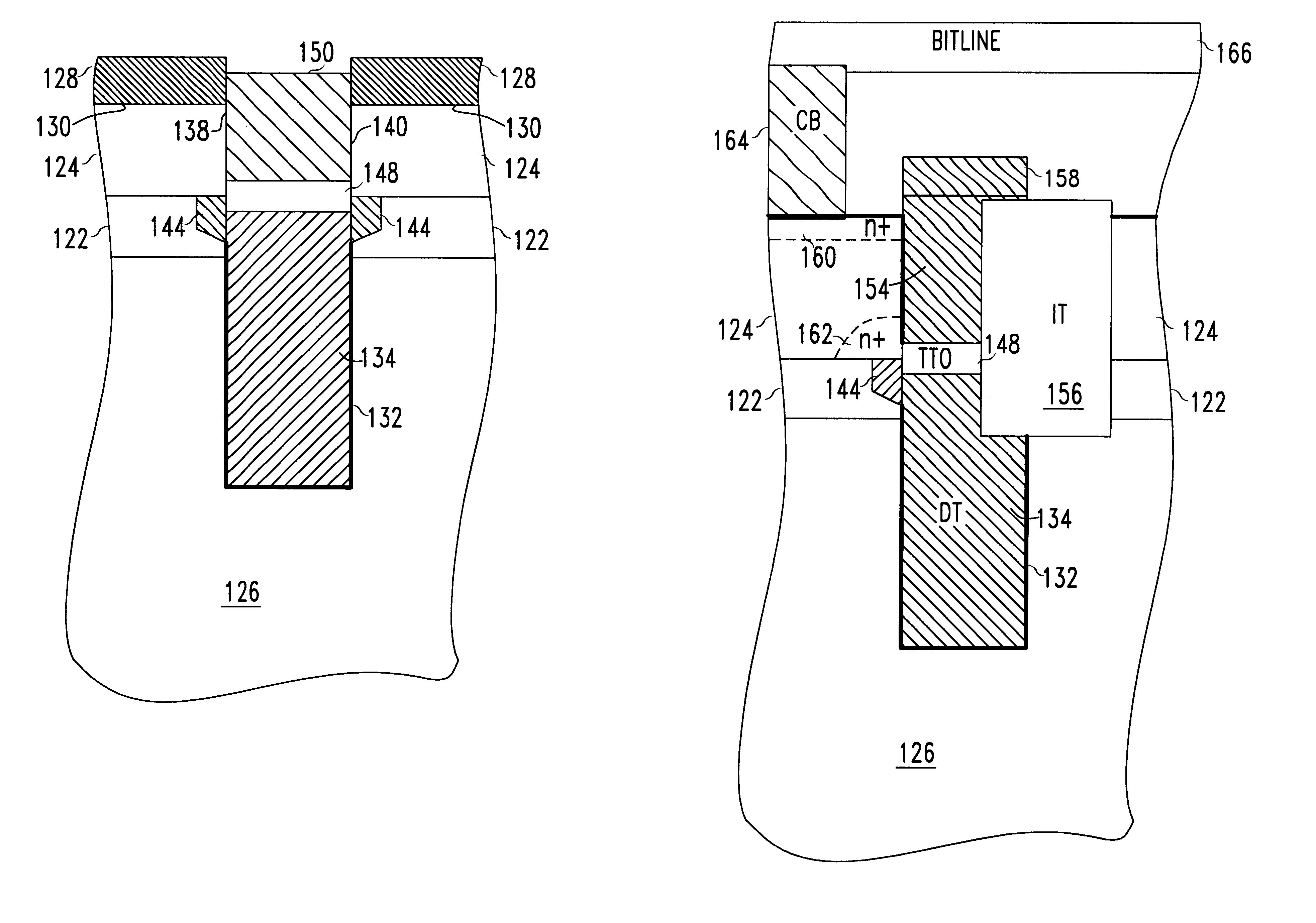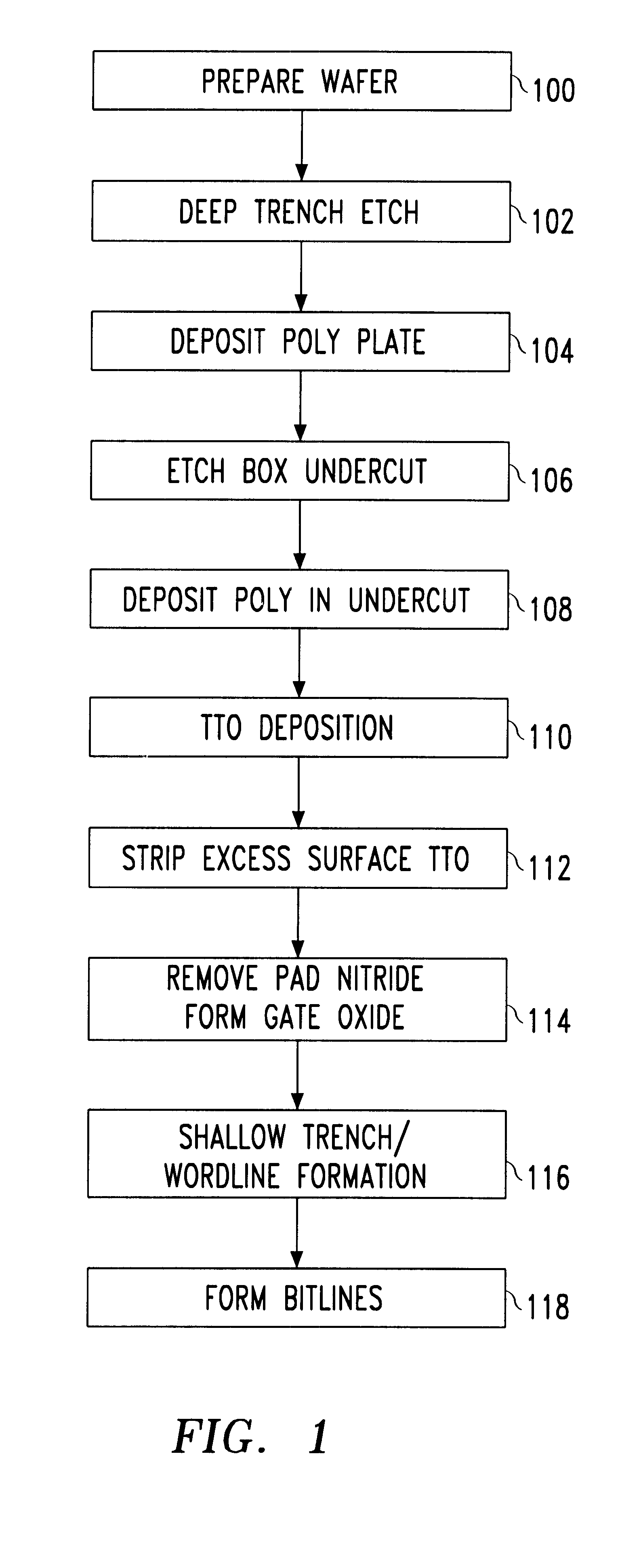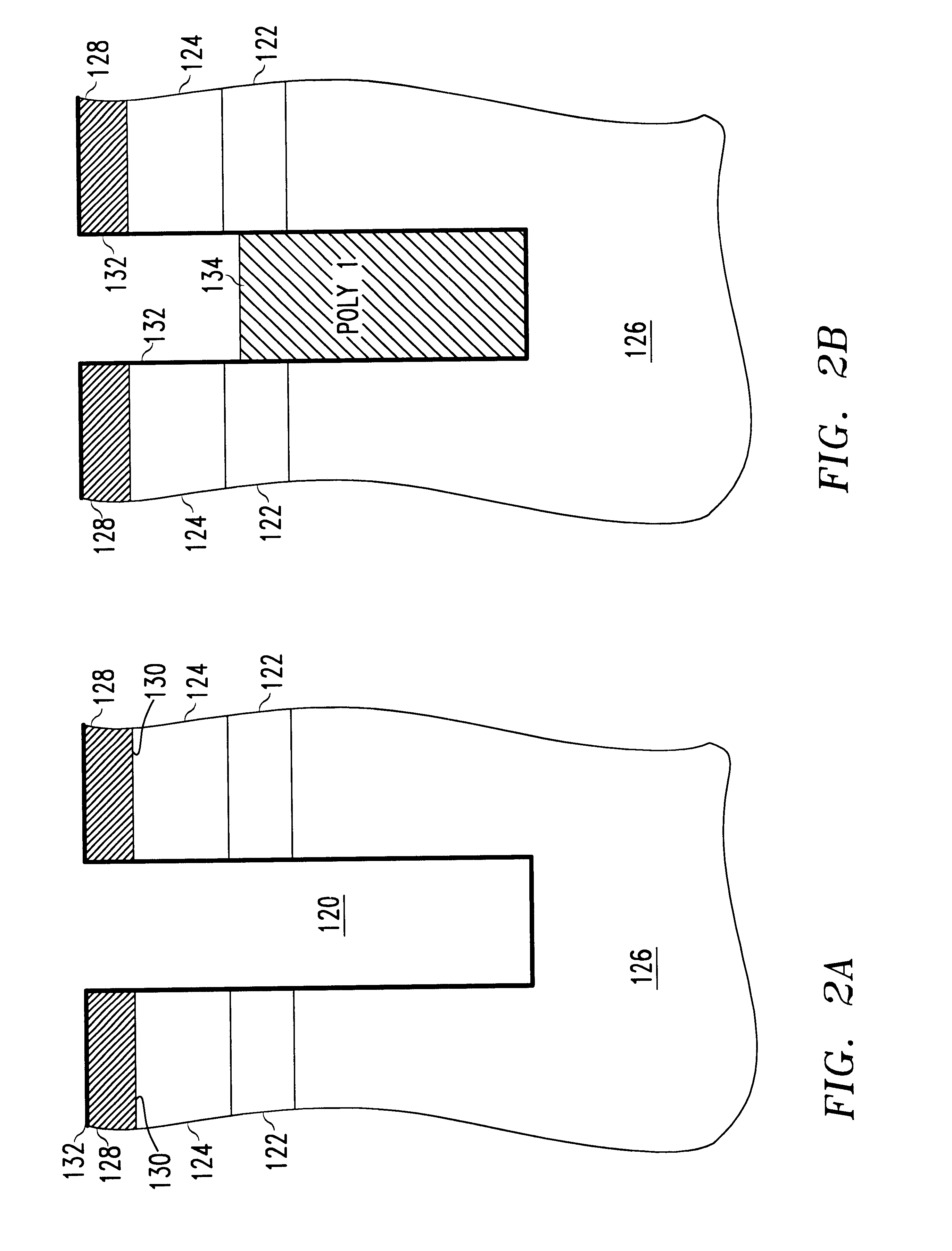Silicon-on-insulator vertical array DRAM cell with self-aligned buried strap
- Summary
- Abstract
- Description
- Claims
- Application Information
AI Technical Summary
Problems solved by technology
Method used
Image
Examples
Embodiment Construction
Referring now to the drawings, and more particularly, FIG. 1 shows a flow diagram of the preferred embodiment silicon-on-insulator (SOI) process for forming vertical DRAM cells. First, in step 100, a layered semiconductor wafer is prepared. Preferably, the initial wafer is a single crystal silicon wafer. A buried oxide (BOX) layer is formed in the silicon wafer. The BOX layer isolates a silicon layer (SOI layer) above the BOX layer from a thick substrate, which is much thicker than the silicon layer. Then, in step 102 deep trenches are formed, preferably, using a typical photolithographic and etch process. The deep trenches are formed through the silicon layer, the BOX layer and into the thicker substrate. A thin node dielectric layer is conformally formed on the wafer and along the deep trench sidewalls. After forming the thin node dielectric layer a capacitor plate is formed in step 104 in the deep trenches. Then, in step 106, the thin node dielectric layer is stripped from the SO...
PUM
 Login to View More
Login to View More Abstract
Description
Claims
Application Information
 Login to View More
Login to View More - R&D
- Intellectual Property
- Life Sciences
- Materials
- Tech Scout
- Unparalleled Data Quality
- Higher Quality Content
- 60% Fewer Hallucinations
Browse by: Latest US Patents, China's latest patents, Technical Efficacy Thesaurus, Application Domain, Technology Topic, Popular Technical Reports.
© 2025 PatSnap. All rights reserved.Legal|Privacy policy|Modern Slavery Act Transparency Statement|Sitemap|About US| Contact US: help@patsnap.com



